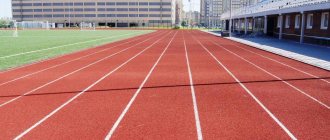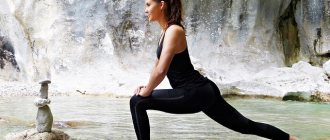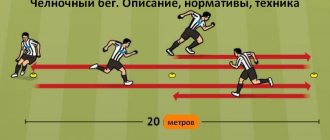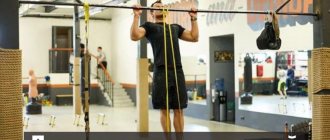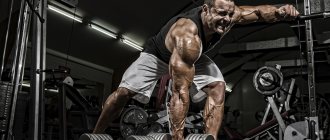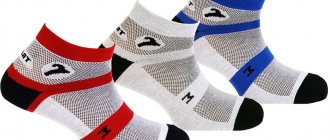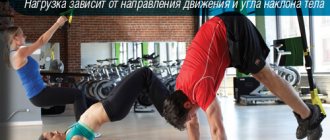Running is one of the most popular types among all sports disciplines. Running is practiced not only by amateurs who want to get in shape and stay healthy, but also by professionals. Running disciplines are a component of athletics and belong to the Olympic sport. There are differences in running between amateur and professional sports. For those who want to benefit from such a discipline, recommendations are provided on the technique and frequency of independent training.
The benefits of running for men and women
Running can provide many benefits for your health and overall functioning. Only if you have the correct running technique, breathing, and moderate heart rate can you benefit from training, otherwise you can do just as much harm.
- Running strengthens the cardio-respiratory system - the heart, blood vessels, improves respiratory function and improves blood circulation.
- Tones all muscles, organs and systems of the body.
- Improves the function of the musculoskeletal system - strengthens bone tissue.
- Improves blood circulation in the pelvic organs - helps improve sexual function.
- Saturates all cells with oxygen, improves overall physical and emotional well-being, prevents stress, and improves immune function.
What muscles work when running
The main load when running falls on the lower leg muscles (soleus, gastrocnemius), thigh muscles - quadriceps and biceps, as well as the gluteal muscles. But you cannot judge running only by the movement of your legs; other muscles also receive sufficient load.
Due to the simultaneous movement of the arms while running, the torso muscles, abdominal muscles, back muscles and arms are also constantly under tension. Therefore, running affects even the smallest muscles of the body, strengthens not only the legs, but also tones the whole body.
Competitions
Conditional competitions are divided into several types:
- individual races;
- team relay race.
Running competitions are held at different levels: professional and amateur.
The first type includes the Olympic Games, world and continental championships. Today, tournaments are held at the level of state, regional, and city championships.
A separate category is represented by interuniversity, school, as well as amateur and professional competitions related to special training.
Running technique
- When running, it is important to keep the axis of the spine in a natural position - you should not pull the pelvis back, performing a strong tilt, or push the pelvis forward, tilting the torso back. Both positions will slow down your speed and have a negative impact on your joints and spine.
- The foot must touch the entire surface of the ground or path. Land on the center of your foot, not your heel or toe.
- Move your arms at the same time as you move your legs , your arms help you accelerate better and make your torso muscles work.
- Don't hold your breath or breathe too quickly. Inhale through your nose and exhale through your mouth, releasing the air slowly.
- Try to inhale when your right foot touches the floor , this will avoid internal pressure on the organs and eliminate pain in the side.
- The feet should be in a parallel position to each other , without moving inward or apart.
The search for the ideal running style has haunted runners for decades.
At the same time, fundamental truths are constantly changing. At first, long strides were in fashion, then suddenly they began to promote increasing the frequency of steps. Currently, it is recommended to bend the arm at the elbow so that the angle between the forearm and shoulder does not exceed 50 degrees, so a number of “bibles” advise beginners to buy a dowel on the construction market and clamp it in the elbow bend.
Along the way, photographs of multiple world record holder Haile Gebrselassie are published: this is how you should run! “Unfortunately, I can’t see what you look like over the phone,” says Professor Bruggeman, “but I assume that both you and I have a completely different body constitution than Gebrselassie, who, as an adult, weighed only 56 kilograms. We also have different proportions of arms and legs. Therefore we can never copy it. It’s quite logical to assume that we will run differently.”
Haile Gebrselassie runs for a world record at the Berlin Marathon:
While many coaches and book authors have been trying for decades to develop a single running style that is suitable for everyone, Professor Bruggeman, as a result of his experiments and research, came to a completely different conclusion: there is no correct running style. Each runner has his own, highly individual way of moving.
While running, each body naturally finds and develops its own individual movement patterns. The position of the foot, the rise of the knee, and the movements of the hands are performed in a way that is convenient for the person. For some people, when placing their feet, their knees diverge to the sides. Bruggeman sees no reason to correct this position of the legs if it is no more pronounced in running than in walking . “The knee joint willingly follows the path of least resistance, that is, it takes a position in which friction is minimal. This can be achieved through both divergence and reduction of the knees. The soft tissues around the joint develop in such a way that it is in this position that the greatest comfort is felt.”
The only problem is that many people's natural movement patterns have atrophied due to lack of mobility. If the last time you ran was as a child, and now, 20 or 30 years later, you are trying to start again, then the musculoskeletal system will experience excessive stress. The cardiovascular system will also experience difficulties, and in a state of fatigue, running technique will suffer even more.
That’s why it turns out that the arms dangle somewhere in front of the chest, instead of moving parallel to the body, and the legs move faster, beating shots on the ground. Such obvious mechanical defects need to be corrected, but there is no need to fit everyone into some general ideal picture. For some, an angle of 80 degrees at the elbow will be quite natural, and for others - 45. The only thing that matters is that your arms are bent.
Finding your own style is not at all difficult, says Professor Bruggeman. And for this you don’t need to make a general pilgrimage to coaches. Any unbiased observer, be it a coach, friend or colleague, can help by noticing: “You are waving your arms in a strange and asymmetrical way. Your right one moves more than your left. It should not be". And the person himself has a very sensitive internal feedback system. We notice when running movements lose their smoothness. To avoid this, there is no need to rush when mastering running techniques. The body itself will find suitable movement patterns if you do them slowly and under control.
“Many of us need to relearn our running technique,” says Bruggeman. - But instead, we believe that it’s enough to just start running, and after 3 months, you see, you can already aim for a marathon. Wow idea! If you approach things without haste and thoughtfully, and listen to yourself, then you can determine without outside help how harmonious our movements are.”
Yes, we are talking about such an already forgotten concept as harmony. It is necessary that the movements that we perform while running, alternately pushing off with one or the other leg, correspond to each other. For example, a person with well-developed thigh muscles can move his leg forward more. Consequently, the movement of the hand in the opposite direction must be more intense in order to compensate for the natural rotation of the body. And if he focuses on the light and fast Gebrselassie, he will only spoil his running technique.
Types of running
It is important to understand that professional and recreational sports have their own differences, requirements and goals. Professionals must show maximum results in a short time. Health running has its own goals and methods.
In athletics, there are the following running disciplines.
- Sprinting – designed to cover 30 m, 50 m, 60 m, 100, 200, 300 and 400 m in a short period of time.
- Middle distance running – covering 800, 1000, 1500, 2000 and 3000 m.
- Long-distance running is overcoming more than 3000 m, or daily running, in which you need to run the maximum possible distance in a day.
- Marathon and half marathon – in the classic marathon the distance covered is 42.195 m, the half marathon is 21 km.
- Steeplechase - designed to overcome obstacles in a circle of a stadium or arena for 2000 - 3000 m.
- Hurdling – performed at distances: 50 m, 60 m, 100-110 m, 300 and 400 m, with light hurdles installed.
- Relay running - passing the baton from one athlete to another, performed 4x100 m, 4x400 m.
In fitness , even school programs, and recently in CrossFit, the following running standards are often used.
- Shuttle running - there are different distances, at which the standard must be fulfilled in the shortest possible time. This type of running develops speed, endurance, and agility, so it is often used in popular fitness areas.
- Interval running – performed with alternating acceleration and rest (walking), suitable for training aimed at losing weight and increasing endurance.
- Jogging or jogging is a moderate run at a speed of 7-9 km per hour. The style is designed for health training, suitable for people of different ages and physical fitness.
- sprint running is a type of athletics running over short distances, but is often also used in fitness for interval training, for example, alternating strength exercises with maximum acceleration over short distances (up to 400 m).
What to choose?
The choice of sports direction depends on the goals. If you want to lose weight quickly and are not shy about exercising outside, then suitable disciplines would be jogging, fartlek and interval running. For those who want to make their figure slimmer without leaving home, we recommend running exercises on stairs and in one place. Fans of active outdoor recreation will appreciate Rogaining and cross-training.
If your dream is to run a full marathon, you can't do it without an experienced mentor. Sign up for special preparatory courses, where you will be given a training system and taught how to eat properly.
Well, if you are choosing a sports section for a child, we recommend athletics. Even if the child does not become a champion, he will still receive an athletic “base” that he will apply in other sports and in life.
What is the best time to run?
There is no specific best time for everyone, the timing of training varies from person to person. The body must awaken; for most people, training in the morning causes great difficulties, since the body has not yet recovered from sleep. It is considered to be the most effective training in the daytime and evening, especially aimed at interval, sprint, and shuttle running. Jogging is suitable as a health-improving workout in the morning to boost your energy levels and improve your health.
GPP (general physical training)
From their first athletic steps, young runners closely combine running loads with a wide range of general strengthening exercises. Only strong muscles, elastic ligaments, strong joints, flexibility, and dexterity allow you to fully develop and successfully endure physical activity. Subsequently, this will help you endure all difficulties without negative consequences and avoid sports injuries.
Of course, general physical fitness for runners has its own bias. The main exercises are the development of the muscular corset, strengthening the foot, leg and thigh muscles. The complex of continuous circular training deserves special attention. Now it has become fashionable to call it crossfit. Popular and effective exercises are a variety of jumping jacks, lunges, throwing weights, and working on hurdles. A distinctive feature of runners’ general physical training is that most exercises are performed dynamically, with relative ease and sharpness of movements. Lightness, grace, speed and strength are the keys to a successful runner.
How long should you run?
Any running workout for developing endurance, losing weight or getting healthy should not last more than an hour. This is fraught with excessive stress on the heart, which contradicts the health-improving properties of running. Depending on the goals , the duration of the training is selected individually. To lose weight and strengthen the body, 40-60 minutes of aerobic exercise is enough. To improve general condition, maintain shape and health, people of any age (without contraindications) can exercise for 30-40 minutes.
You shouldn't train every day; alternate a running day with a rest day. You can also train 4 times a week, but you must leave 3 days of rest for recovery.
Fartlek
Essentially, this is a simplified form of segments. This is originally a Swedish term that translates as “game of speed.” I call this “recess.” There are no strict regulations on the length of segments, the number of repetitions, and this format is not at all picky about the conditions. All you need is the desire to work lightly at a hard intensity.
The point of this exercise is simple. You independently, relying only on your feelings, perform an arbitrary number of accelerations, at any speed, and in the same way decide how much and how to rest after the completed working segment. There are several advantages to this type of training:
- informal approach;
- load adequacy;
- variability of venue.
An additional feature of fartlek is that the training volume is not so small. It’s unlikely that a couple of accelerations of 30 seconds each with a short rest can be called fartlek. Naturally, each runner has his own tasks and capabilities, but usually the total mileage for such a workout is at least a few kilometers.
Running safety
- Always start your run by walking or jogging slowly to warm up your muscles to prevent straining your ligaments, muscles and tendons.
- Start running only without contraindications and restrictions to training - diseases of the spine, joints, veins, injuries and fractures, hypertension, heart failure, as well as inflammation and acute pain.
- Choose the right shoes and clothes that do not restrict movement. Running shoes must be the right size and designed specifically for running.
- Choose flat surfaces for running , stadiums, parks, treadmills. Avoid dirt or rock surfaces, which can cause injury if you slip or place your foot incorrectly on uneven surfaces.
- Do not stop abruptly , immediately reducing the speed, this is a big burden on the heart. Slow down gradually, then slowly start walking.
- An important condition for running training is timely replenishment of lost fluid , which is greatly lost during aerobic exercise. If you feel thirsty, take a few sips of water and continue running. Losing a lot of fluid and feeling thirsty for a long time can lead to dehydration and even fainting.
Common Mistakes
Before running correctly, running technique begins to be learned from mistakes. They are repeated in almost everyone who just starts running. These include:
- “sticking” the foot into the surface;
- throwing your heels to the sides;
- running on the forefoot.
The first thing that novice runners encounter before setting up their running technique is the so-called “sticking” of their feet into the surface. This means that there is a slowdown when planting the foot, as the foot is placed at an angle to the surface. Because of this, running speed is lost and the load on the knee joint increases.
Running mistakes and explanations of how to run correctly. Your running technique must be thoroughly honed.
A common mistake many girls make is throwing their heels to the sides, which also causes a loss of running speed. Also, a consequence of this error is an increase in the volume of the outer part of the lower leg muscles. Because of this, the legs visually look crooked.
Important! By avoiding the described mistakes, you can easily understand the basics of walking and running techniques.
Running on your toes is also considered a mistake, as this increases the load on the Achilles tendon. Many people use this technique precisely in order to avoid the first mistake mentioned - “sticking in”. Toe running is also practiced by people wearing shoes that are not designed for running. Therefore, for such activities it is worth choosing sneakers with thick and soft soles. Some call this style "natural running technique", but it is only suitable for those who sprint.
The natural running technique does not exclude the rules for fulfilling the requirements for running, as can be seen in the photograph, the athlete sticks her heel in
